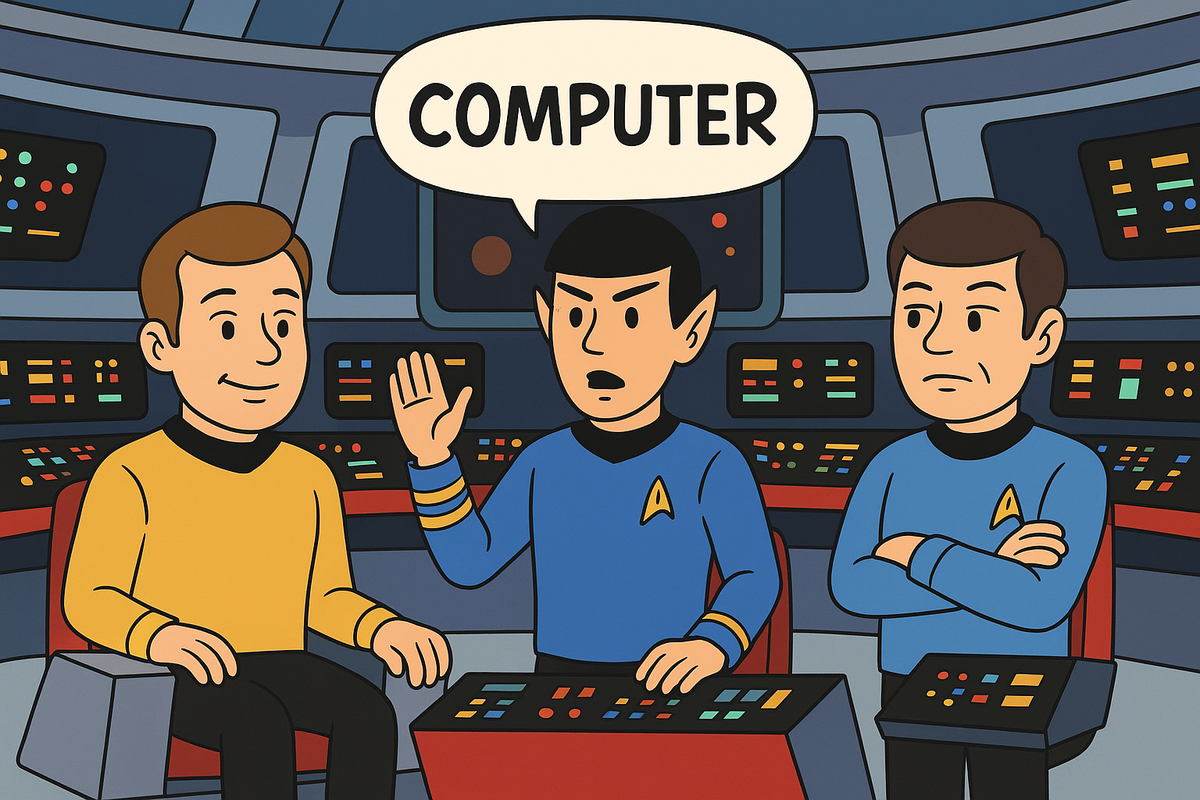For years, we accepted a simple truth:
If users wanted to get something done, they had to know how to navigate the system.
Need a new customer invoice?
Log in ➔ Find the "Billing" tab ➔ Click "Invoices" ➔ Create new ➔ Fill the form ➔ Save.
It’s a maze. And every time the UI changes, every time a new field appears, the burden falls back onto the user to re-learn the system.
But what if users didn’t have to learn anything at all?
What if they could simply express their intent - and the system figured out the rest?
That's where the future is headed. And it’s arriving faster than most companies are prepared for.

Users Don’t Want Navigation. They Want Outcomes.
"Users don’t want to click buttons — they want to accomplish goals." – Alan Cooper
When we force users into procedural thinking - menus, tabs, endless forms - we introduce friction into every interaction.
Research by the Nielsen Norman Group shows that each additional navigation step decreases task completion rates and increases time-to-value. The longer the journey, the higher the risk of user frustration, abandonment, or error.
Intent-driven systems flip the model:
- The user states the goal
- The system expands the context
- The user confirms or adjusts
- The system executes the outcome
The complexity shifts from the user’s brain to the system’s intelligence.
Real-World Example: The Agent in Action
Imagine a finance manager needs to invoice Acme Corp.
Instead of clicking through accounting software menus, they simply type:
"Create an invoice for Acme Corp for $5,000."
Here’s what the system does automatically:
- Checks Acme’s account standing
- Notices Acme only has $4,500 in available accruals
- Flags the discrepancy
- Suggests adjusting the invoice, splitting it into two, or escalating for approval
- Pre-populates fields the user would normally fill manually
From idea to execution in one flow.
No manual lookups. No form-hunting. No misclicks.
Why This Matters Now
Historically, building systems that understood messy, incomplete, or complex user input was impossible.
Today, advances in conversational AI (OpenAI, Anthropic), agent frameworks (LangChain, ReAct), and enterprise orchestration layers make it not only possible - it’s becoming an expectation.
Think about it:
- Google Duplex successfully negotiated hair appointments over the phone - back in 2018.
- ChatGPT crossed 100M users in two months because people could express what they wanted, not how to get it.
- Microsoft Copilot is embedding goal-oriented workflows inside Excel, Word, and beyond.
Users are already being conditioned to expect intent-first, outcome-driven experiences - not forms, not tabs, not endless clicks.
Companies that delay adapting will find their user satisfaction (and retention) slipping behind.
Designing for Intent: Principles for the Next Generation Interface
If you want to stay ahead, it’s not enough to "add a chatbot."
You must rethink your experience around these principles:
1. Intent is Primary
Capture the user’s desired outcome, not their step-by-step action plan.
"I want to onboard a new hire" ➔ not "Fill out form 5B, section 12".
2. Context Expansion
Pull in relevant data automatically.
Pre-validate, enrich, and warn intelligently before the user hits a wall.
3. Progressive Disclosure
Ask for more details only when necessary.
Don't overwhelm users up front with 30 questions "just in case."
4. Conflict Detection and Resolution
If something’s wrong (like Acme’s accrual limit),
the system should proactively surface options - not just throw an error.
5. Trust Through Transparency
Show users what data you used.
Explain why you made a suggestion.
Trust is built on clarity, not magic.
Closing: The Future Is Outcome-Driven
Agent experiences aren’t about replacing the UI. They’re about replacing the mental model.
Outcome-first systems will:
- Decrease time-to-value
- Increase user satisfaction
- Unlock massive operational efficiencies
The companies that win the next decade will be the ones that listen, understand, and deliver - faster and smarter than ever before.
What’s Next
In the next post, we'll break down the nuts and bolts of capturing messy human intent - and how to translate it into clean, actionable system outcomes.
The future is already here. Are your systems ready to hear what your users are asking for?
Stay tuned.